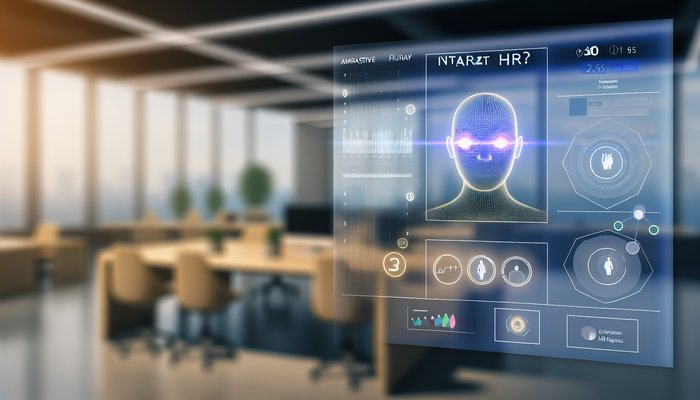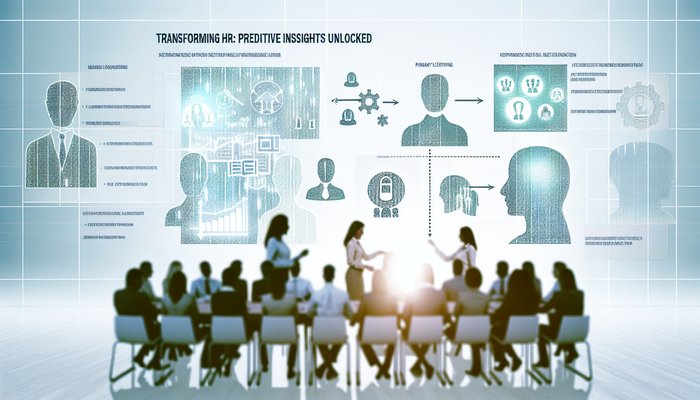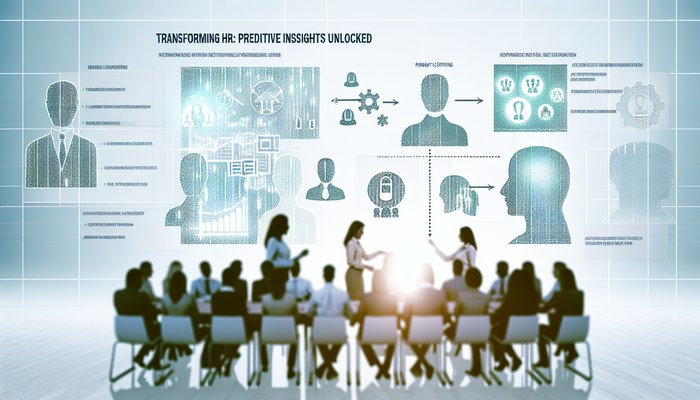Transforming HR: Predictive Insights Unlocked
on Mayo 29, 2025


Introduction to Predictive HR Analytics
In today’s fast-paced business environment, HR departments are evolving from administrative functions to strategic partners. Organizations worldwide are leveraging predictive analytics to drive transformative HR initiatives, innovate talent strategies, and create robust decision-making frameworks. This shift is fueled by the power of AI and advanced analytics that turn heaps of historical data into actionable insights.
Predictive analytics combines traditional statistical methods with new machine learning techniques to forecast trends and guide HR decisions. The integration of innovative approaches not only streamlines recruitment but also enhances employee engagement, retention, and performance. By harnessing these tools, companies can anticipate changes, mitigate risks, and optimize the workforce continuously.
Foundations of Predictive Analytics in HR
The foundation of predictive HR analytics lies in understanding data. HR leaders are now exploring how techniques like regression analysis, classification models, clustering, and time series analysis can influence talent management. Each method plays a unique role in diagnosing past performance and mapping out future workforce needs.
Two primary categories of analytics form the backbone of these initiatives: descriptive analytics, which explains what has happened in the organization, and predictive analytics, which forecasts what could happen. Organizations find that by blending these approaches, they can derive more extensive understanding and foster a culture of continuous improvement.
Key Predictive Analytics Techniques
Modern predictive analytics deploys various techniques that can be classified into several categories:
- Regression Analysis: Traditional linear and logistic regression models reveal relationships between variables, predicting future trends and employee behaviors.
- Classification and Clustering Models: Classification methods assign data points to pre-defined categories, while clustering groups similar attributes without predefined labels—tools essential in talent segmentation and anomaly detection.
- Time Series Analysis: This method is crucial when historical data is involved, analyzing trends, seasonality, and forecasting future outcomes.
- Simulation Techniques: Monte Carlo simulation aids in assessing risks by simulating varied scenarios and outcomes under uncertainty.
- Additional Techniques: Techniques such as factor analysis, cohort analysis, and sentiment analysis further enhance data interpretation by reducing dimensionality and capturing qualitative insights.
“The true power of predictive analytics in HR lies not just in forecasting trends, but in redefining the way organizations perceive and manage talent through innovative, data-driven strategies.”
Integrating AI and Innovation in HR Analytics
Artificial Intelligence is at the heart of the HR analytics revolution. AI-powered systems refine predictions by learning from vast datasets, continuously improving their accuracy. This synergy of AI and predictive analytics fuels innovation in HR practices, making processes like recruitment, performance management, and workforce planning smarter and more efficient.
Organizations are now integrating big data and AI to create systems that provide real-time insights. By automating routine tasks, HR teams free up time to focus on strategic planning, thus leading to more innovative and human-centered HR initiatives. For more insights, visit our HR Insights Center.
Case Studies: HR Analytics in Action
Successful applications of predictive analytics in HR are not just theoretical—they are being demonstrated through concrete case studies. Trusted sources like Gartner for HR, HR Acuity, and the HR Consulting Group have highlighted transformative case studies that underscore the impact of these techniques. Explore our internal case studies section for detailed narratives.
For instance, several companies have used classification models to improve candidate screening processes. By analyzing historical hiring data, these organizations have identified patterns that led to a reduction in turnover and a significant improvement in employee satisfaction. Similarly, time series analysis has been instrumental in forecasting staffing needs during periods of seasonal fluctuation, ensuring optimal resource allocation.
- Gartner for HR: Real-life success stories from Gartner demonstrate how structured analytics can solve complex HR challenges and foster long-term organizational success.
- HR Acuity: Case studies at HR Acuity focus on overcoming employee relations challenges and streamlining HR processes through automation and predictive modeling.
- HR Consulting Group: Detailed narratives from various industries show measurable outcomes from predictive analytics interventions, from improved hiring strategies to enhanced employee engagement.
Organizations seeking to adopt these strategies can explore their own dashboards and analytics platforms to set benchmarks for performance and measure the impact of predictive analytics. Internal case studies often reveal that embracing these modern techniques results in not just competitive advantage but also a more engaged and productive workforce.
Innovative HR Strategies Driven by Predictive Analytics
Predictive analytics is paving the way for innovative HR strategies that transform traditional practices. Companies integrate advanced data methodologies to unlock new potentials in workforce management. These strategies include everything from personalized employee development plans to more effective talent sourcing, driven by insights obtained from sophisticated analytics tools.
Advanced regression models and neural networks allow HR teams to predict employee behaviors and proactively address challenges. This not only helps in talent retention but also in aligning employee objectives with organizational goals. The focus on innovation promotes a more adaptive and resilient work culture.
- Embrace AI-driven tools to boost recruitment accuracy and reduce bias.
- Utilize clustering techniques for effective segmentation of talent pools.
- Leverage time series analysis for forecasting staffing needs in dynamic markets.
These strategies highlight the transformative role of predictive analytics in HR, where data informs every decision. By standing at the confluence of technology and human insight, experts are creating models that are both robust and adaptable. The outcome is a dynamic HR environment that consistently adapts to external changes and internal demands.
Measuring Impact and Continuous Improvement
The effectiveness of predictive HR analytics is measured not only in numbers but also in qualitative improvements in workplace culture and employee satisfaction. Continuous monitoring and feedback, enabled by advanced data techniques, ensure that these initiatives remain aligned with evolving business goals. Predictive models are continuously recalibrated as new data emerges, ensuring sustained accuracy and relevance.
Internal dashboards, powered by AI and predictive visualization tools, offer real-time tracking of key performance indicators. This transparency drives accountability and fosters an environment of continuous improvement. Managers and HR professionals now have powerful digital tools to diagnose issues and apply solutions rapidly, making analytics an integral part of everyday operations.
Future Trends in Predictive HR Analytics
The future of HR is bright with continued advancements in predictive analytics and AI. Emerging trends include the integration of augmented analytics—a blend of machine intelligence with human insights—allowing for even more precise decision-making. As companies continue to invest in innovative technologies, the role of HR will become increasingly strategic and data-centric.
Looking ahead, expect more seamless integration of multiple data streams, higher levels of automation, and improved model interpretability. Forward-thinking organizations are already developing internal communities of practice to share best practices in predictive analytics. This collaboration across departments underpins a transformative shift in HR management, promising a future where every decision is informed, precise, and agile.
Conclusion and Call to Action
The journey toward fully integrated predictive HR analytics is both challenging and rewarding. As organizations adopt innovative techniques and leverage AI-powered tools, the transformation of HR becomes inevitable. Decision-makers who invest in these technologies will not only reap the benefits of a data-driven approach but also secure a competitive advantage in an ever-changing marketplace.
We invite you to explore further how predictive analytics and innovative HR strategies can revolutionize your talent management practices. Engage with our experts at The Moodbit Team to learn how you can implement these cutting-edge solutions in your organization. Transform your HR strategy today and unlock the true potential of your workforce by stepping confidently into the future of HR innovation and analytics.



Leave a comment